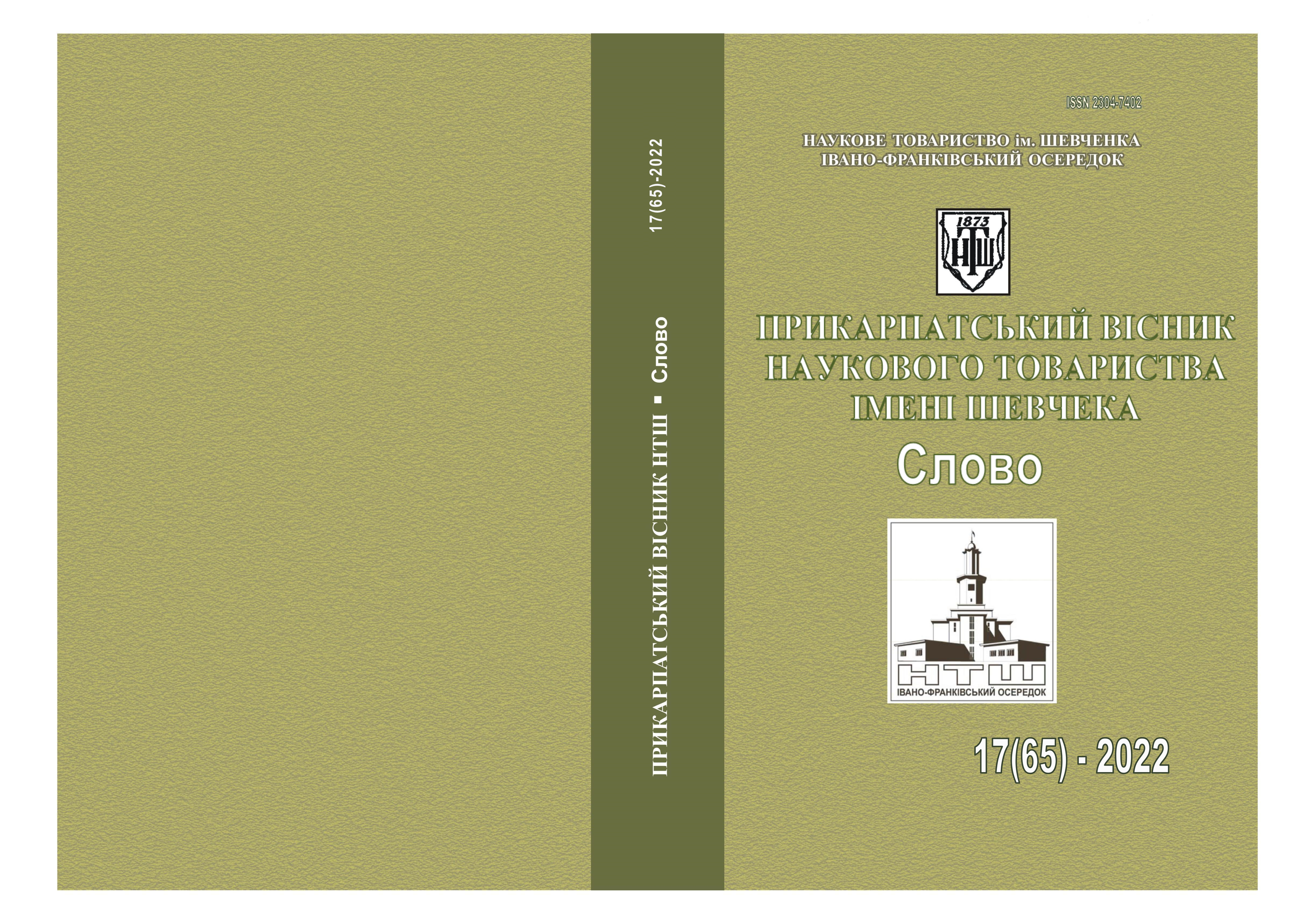MORAL AND AESTHETIC ASPECTS IN THE NOVELISTIC OF MIGEL DE CERVANTES
DOI:
https://doi.org/10.31471/2304-7402-2022-17(65)-282-292Keywords:
selected short stories, education, values, ethicsAbstract
The article is devoted to the analysis of M. de Cervantes’ selected short stories as a source of historical education. The writer introduces mass aspects of education in the past, which are closely related to the universal life of society and its citizens. In the short stories "La gitanilla" and "Coloquio de los perros" ("The Gypsy Girl" and "The Dog's Conversation") from "Las Novelas Ejemplares" scenes of education are described according to ethical issues of that time. M. de Cervantes explains ten aspects of education in the past, especially connecting it with the social and universal life of citizens. In this context, "La gitanilla" and "Coloquio de los perros" ("The Gypsy Girl" and "The Dog's Conversation") from "Las Novelas Ejemplares" ("Selected Novels") include vivid description of the characters and their features. In both novels, many important educational scenes are presented from an ethical point of view.
After the solemn celebration of the 400 th anniversary (2016) of the first part publication of the great literary work of world significance "El Ingenioso Hidalgo Don Quijote de la Mancha" ("The genius Hidalgo Don Quijote of la Mancha"), it is necessary to mention publication of "Las Novelas Ejemplares" ("Selected Novels ") from 1609. This work shows the value of literature as an important source of studying some aspects of education in the past, as well as the source of better history knowledge.
The mission of the school at that time was education and upbringing of boys and girls. The school of Christian doctrine "el Colegio de los niños de la Doctrina y el Campañía de Jesús" had the leading position. The first school of this type was organized in 1542 in the city of Valladolid. Humanist poet Luis Vives and the religious figure Juan from the town of Avili were first people to establish such schools.
In those days, child begging was widespread in Spain, which led to crime. Poor people died on the streets from hunger and diseases and this caused considerable fear. The purpose of the school was to gather poor orphan children aged 5-12 and teach them Christianity, shape their behavior, teach them to read, write, count, teach catechism as well as manual labor in order to support themselves economically, to prepare them for entry into art workshops in order to earn for a living and have a decent job in the future.
According to Jose Luis de los Reyes Leos [3] "el Colegio de los niños de la Doctrina", the correctional school for delinquents has became professional. The duties of the children of such a school included singing in the streets and squares in continuation of the holiday, singing in churches, and also attending funerals.
References
M. de Cervantes Saavedra Novelas ejemplares Editorial «Progreso Moscu, 1976.
Carmen Labrador Herraiz, Ángela del Valle López:» Сervantes Y La Educacion.» Unas notas en «Las Novelas ejemplares» Електронний ресурс [форма доступу: Papeles Salamantinas de Educación,ꞏ№6, 2006 р. 27-50].
Diccionario Espanol-Ruso Editorial «Russki yasik» 1988.
https://www.wiki.uk-ua.nina.az Серпень 04, 2021 Електронний ресурс
José Luisdelos Reyes Leoz Електронний ресурс [форма доступу: es-academic.comhttps:// es-academic.com>eswiki]
La «Doctrina Cristiana» de San Juan de Avila (Contribución al estudio de su doctrina catequética). Pamplona, Eunsa, 1977. Epistolario. Електронний ресурс.
Los colegios de doctrimos o de mmos de la docnoma cmstiana. Muevos datos y fuentes documentales para su estudiofelix samtolaria sierra Universidad de Barcelona Hispania Vol 56, Núm. 192 (1996).
Sobre este tema puede consultarse Steven Hutchinson: La valoración de seres humanos en las Novelas Ejemplares de Cervantes en A. López Martínez (ed.) (1995): A Ricardo Gullón: sus discípulos, ALDEEU, Erie, Pensylvania, pp. 115-120.

